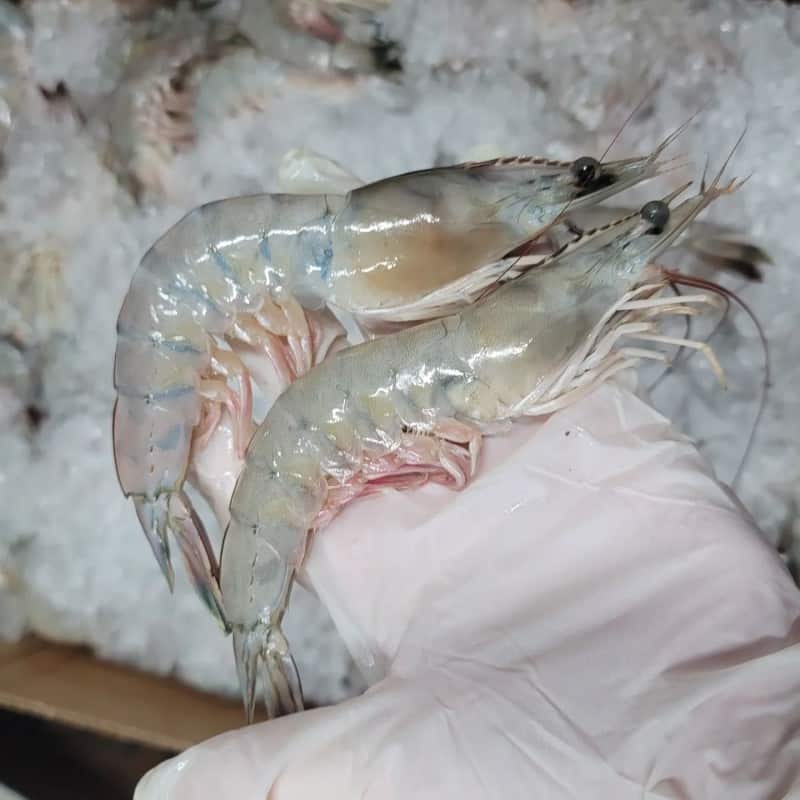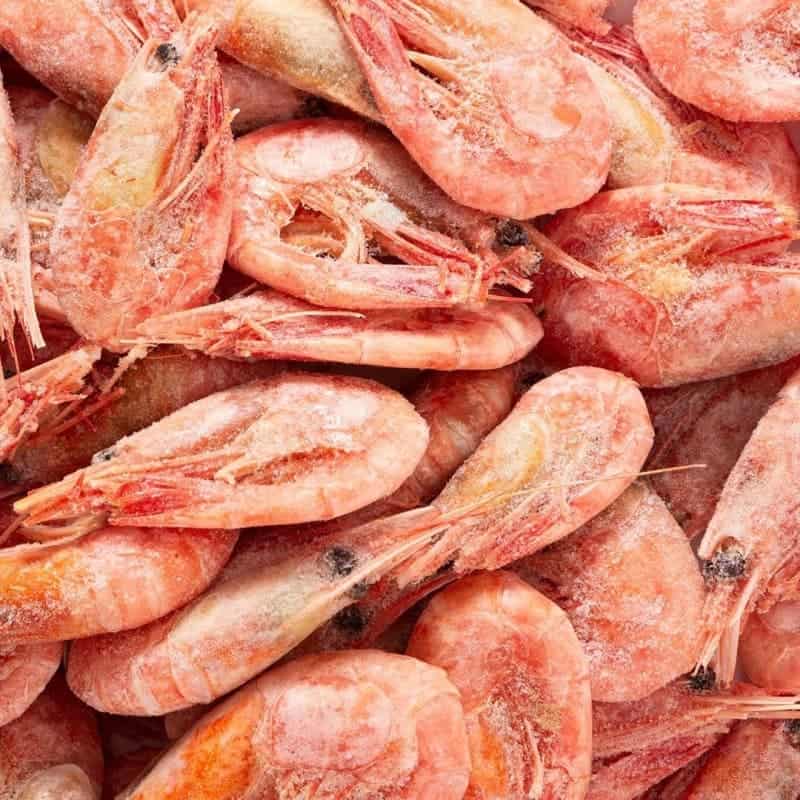Do you like cooking with seafood? If so, you probably know how sensitive the freshness of your main ingredients can be. As a matter of fact, a seafood meal that has an unpleasant taste might be the result of rotten shrimp.
And truth be told, if you eat spoiled seafood, you might risk getting stomach sickness and regret that you didn’t follow some simple steps in detecting if shrimps are sour. Therefore, you should be aware of the main indications of rotting shrimp to get rid of spoiled seafood before you start eating them.
Even at room temperature, shrimp may go bad in just a couple of hours, so keep a close eye on the possible signs of spoilage before you start preparing a Mediterranean dinner. So here is the precious information you need to know regarding the signs of spoiled shrimp.
The Shelf Life Of Fresh Shrimps

Fresh shrimp has a shelf life of approximately five days. Usually, the color of fresh shrimp is white, with translucent areas taking a pinkish shade once cooked. The scent is mild and a bit salty, considering they come from seawater. These are some easy ways to distinguish spoiled shrimp from fresh ones.
The look of the shells
Usually, the shell of fresh raw shrimp should be glossy and look closely attached to the body. If the surface is discolored and relatively loose or has shady spots on it, it might mean that the shrimp has gone bad and therefore should be thrown away.
Furthermore, if the shell has a yellowish appearance or is gritty, these might be the marks of using particular chemicals to mask the age of the shrimp. Sodium bisulfate is a method to bleach the shells.
Keep in mind fresh shrimp is always translucent and glossy and has no spots or discoloration.
The eyes
Look closely at the eyes of shrimps if they still have the head-on. Fresh shrimps will usually have those prominent, clear eyes. Otherwise, if they are opaque, they might signify possible spoiling.
Another great way to tell the shrimp is safe to consume is by touching them. They should be smooth and firm. If the feeling is slimmer, then do not consume those shrimps.
Color
The color is a simple and visual indicator of the shrimp’s freshness. The typical shade should be pinkish/peach, with translucent parts. As soon as you start cooking the seafood, it becomes pink or reddish.
Smell
Fresh raw shrimp will usually have this salty scent, reminding you of seawater. Shrimp might have gone bad if you feel any rancid or foul smell that resembles ammonia. The smell is an excellent indicator of microbes growing on the fish.
“Best to use before” specification
If you prefer buying shrimp that are already packed, you should pay attention to those labels that mention how long seafood is safe to use. If that “use by” date has passed, it is best to get this sea food out.
How To Tell Frozen Shrimps Have Gone Bad?

Check these steps to tell if frozen shrimps have gone bad or not:
- The first step, thaw this seafood in the refrigerator and keep it there for at least one hour. If you don’t follow this step, you won’t be able to touch, smell, and search for those symptoms of rotting.
- Take in the aromas using your olfactory sense. You should feel a saltwater fragrance and a faint ocean scent from the shrimp. If you notice any overpowering smell, toss the seafood as it might contain iodine, ammonia, or chlorine.
- Look closely at the shells and make sure they are still attached. Frozen shrimps usually have their heads cut off. Hence, you can check the exposed flesh and see its color. It should be snowy white, while you should toss out the meat if it is pink right in the center.
- Check the shrimps with your hands. Sliminess is the main sign that something has gone bad. Fresh shrimps should be damp but not slick at all. Sliminess is a red flag regarding bacterial growth and overuse of chemicals during the shrimp cooking process.
Can Bad Shrimps Lead To Food Poisoning?
One-fifth of all packed shrimps are contaminated with vibrioni, and E.coli, some toxic germs. Bacteria like this can lead to food poisoning and stomach illness, leading to dehydration or diarrhea. In rare instances, this illness might even be lethal.
Is It Safe To Eat Old Shrimps?
This might become a deadly action if you eat large amounts of rotten shrimp. To destroy every bacteria from the shrimps, you must heat the seafood first. If you don’t cook it properly, all the possible parasites and germs may build in time. The result will be food contamination.
Best Ways To Freeze Shrimps
If you have lots of raw or cooked shrimps, you want to store them properly and then freeze them. On the other hand, if you prefer to keep the shrimps in the freezer, they will stay fresh and safe for up to 6 months without losing their flavor.
Freezing Cooked Shrimps
The first thing you want to do is remove the shrimps’ shells. If you cook shrimps together with their shells before freezing, they will stay fresh longer. Remove the shells and tails carefully by hand and the head of the shrimps.
Tip: Do not keep the cooked shrimps at room temperature too long.
Make sure you cook the shrimps for about 10 minutes at low temperatures. Add water into a pot and put the shrimp after reaching the boiling point. Allow the seafood to simmer for about 10 minutes, so no shell parts or bacteria will be left.
Take the boiled shrimps out of the water and arrange them on a soft surface before freezing them. Do not place the shrimps in the freezer if they are not solid at the touch.
Personal opinion: I usually store multiple small containers of frozen shrimp rather than a big one.
What Color Do Rotten Shrimps Have?
Raw shrimps should be white and have a translucent look. If you buy cooked shrimps, make sure they are pink. Sour shrimps usually have discoloration, suggesting the flesh might be rotted. Therefore, you must examine the shells and check if there is any sign of dirt or yellowing.
Last Thoughts
Telling if the shrimps are bad is easy if you look carefully for the first signs of contamination. If the smell is sour, or they feel slimy, then you should stop consuming that seafood. Keep in mind that rotten shrimps are very dangerous, so do not take any chance and risk catching food poisoning.
